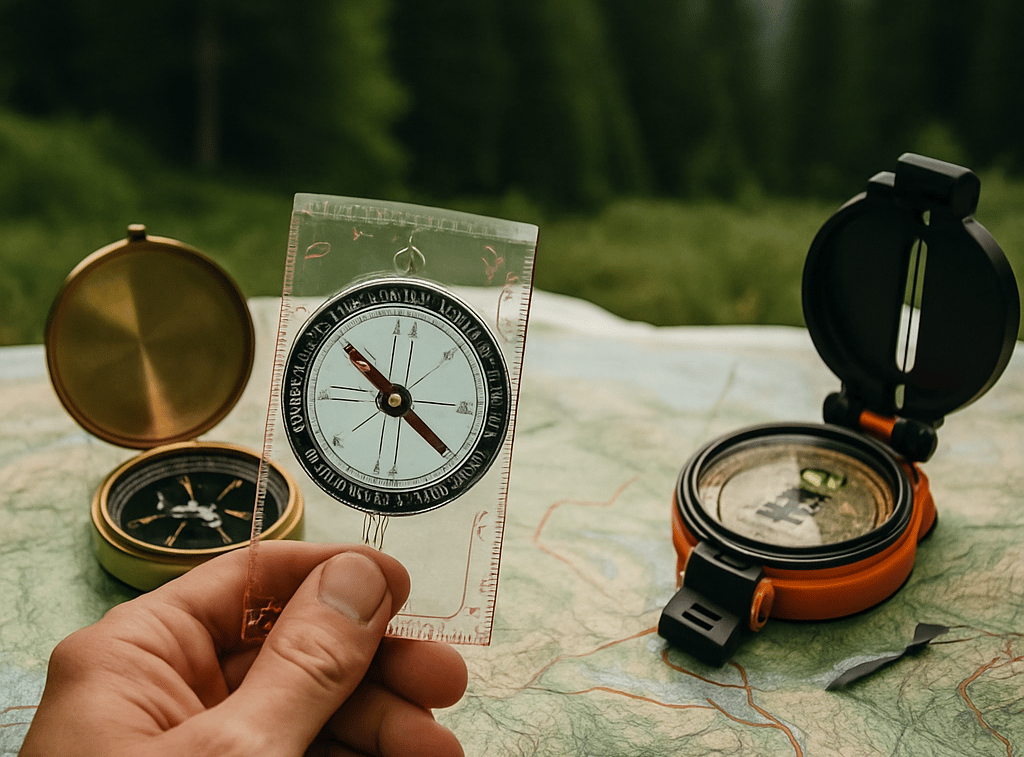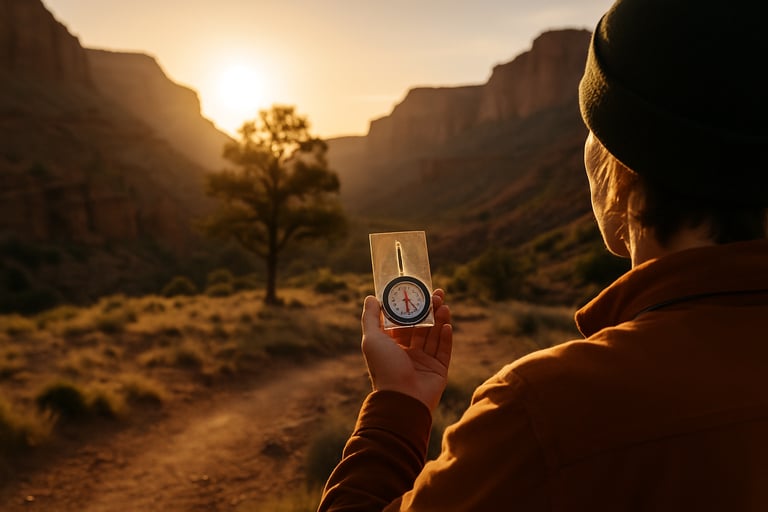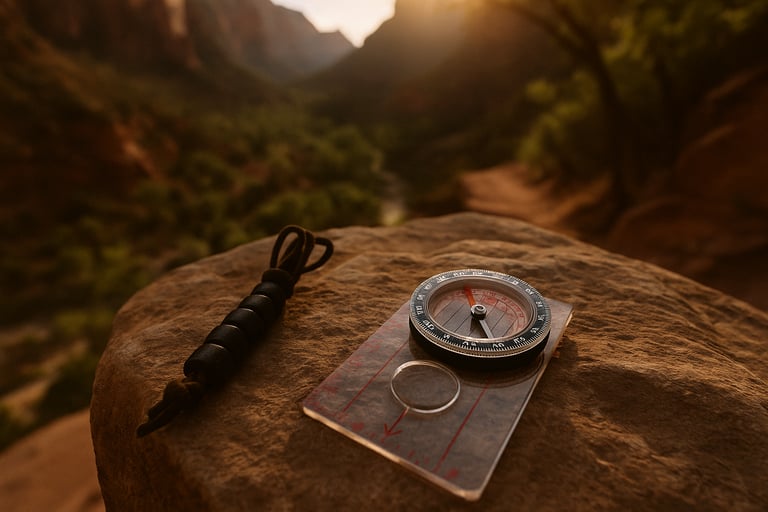How to Use a Compass Without a Map: Simple Wilderness Survival Navigation Tips
Learn how to use a compass without a map for survival navigation. These simple tips will help you stay oriented and find your way in the wilderness—even with no map in sight.


How to Use a Compass Without a Map: Simple Wilderness Survival Navigation Tips
Why Learn Compass Navigation Without a Map
Most people are taught to use a compass alongside a topographic map, but what happens when you don’t have one? In wilderness survival, being able to navigate without a map is a crucial skill. Whether your map was lost, damaged, or you never had one to begin with, a compass alone can still help you maintain direction, track your bearings, and avoid walking in circles.
Compass navigation without a map is all about orienting yourself to cardinal directions, choosing a reference point, and staying on course.
Understanding Your Compass
Before you set off, you need to understand the parts of your compass. The magnetic needle always points toward magnetic north. The rotating bezel (the circular dial) is marked in degrees from 0 to 360. The orienting arrow sits inside the bezel, and the direction-of-travel arrow is on the baseplate.
This setup lets you follow a consistent heading or direction, even without terrain references from a map.
Setting a Bearing Without a Map
To use a compass without a map, you’ll set a bearing — basically a direction you want to travel. Hold the compass flat in your hand at chest level, and point the direction of travel arrow at a distant landmark like a tree, hill, or ridge line. Rotate the bezel until the orienting arrow lines up with the magnetic needle. This locks in your direction.
As you walk, keep the magnetic needle inside the orienting arrow (a technique often called “keeping red in the shed”) to stay on course. To build a stronger foundation in compass use and terrain reading, check out our guide to orienteering skills for wilderness survival.
Using Landmarks to Stay Oriented
Since you don’t have a map to guide you between waypoints, you’ll need to use visual references. After setting your bearing, pick a fixed landmark in that direction — something far enough away that you can walk to without having to check your compass every few steps. Once you reach that spot, repeat the process.
This leapfrogging method helps you travel in a straight line and minimizes the risk of drifting off-course, which is easy to do over uneven terrain. It’s also smart to combine this method with natural navigation techniques that use the sun, stars, and landscape features to stay on track.
Backtracking Safely
A key trick in compass-only navigation is knowing how to retrace your steps. To return along your original path, simply rotate the bezel 180 degrees (add or subtract 180 from your current bearing). This gives you the exact reverse direction. Keep the needle lined up with the orienting arrow again, and you’ll be heading back along your original path. f you ever do become disoriented, learning what to do if you’re lost in the wilderness can help you make calm, informed decisions.
Avoiding Common Compass Mistakes
It’s easy to make errors when using a compass alone. The most common mistake is letting the compass tilt or failing to keep the needle properly aligned. Another is forgetting to recheck your bearing after going around obstacles like fallen trees or steep drops. Practice keeping your compass level and frequently double checking your direction.
Also, remember that metal objects — like belt buckles, knives, or even cell phones — can interfere with the magnetic needle. Always step away from metallic gear before taking a reading.
Pair Compass Skills with Observational Awareness
Even without a map, your compass is just part of the equation. Good survival navigation means paying attention to the environment. Note the position of the sun throughout the day, observe natural landmarks, and track time and distance to estimate how far you’ve traveled.
This blended approach — tools plus awareness — is what truly helps you navigate confidently and safely in the backcountry. For a more complete approach to off-grid navigation, be sure to read our guide on reading a topographic map for survival.




© 2025. All rights reserved About | Privacy Policy | Terms and Conditions | Affiliate Disclosure | Disclaimer


